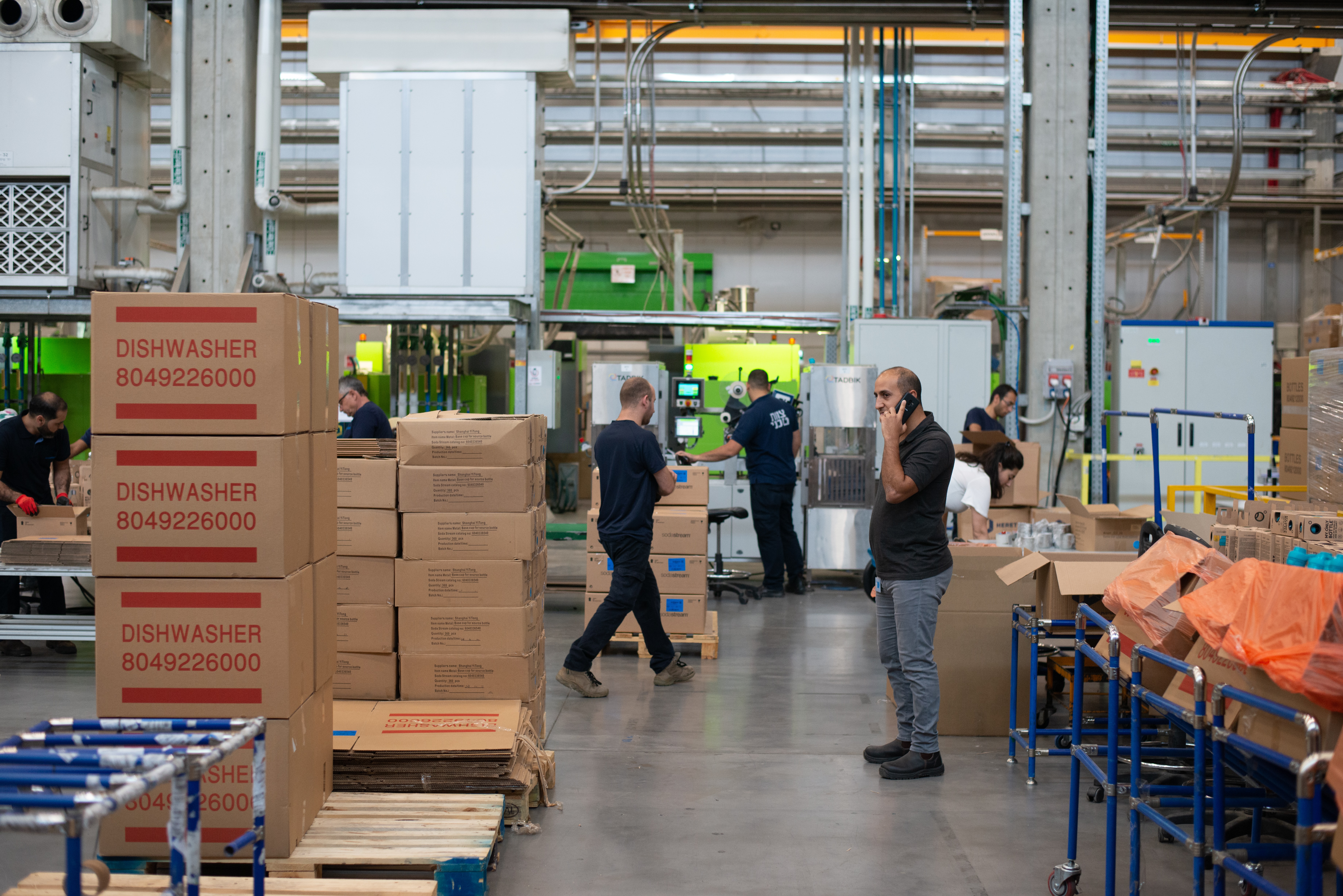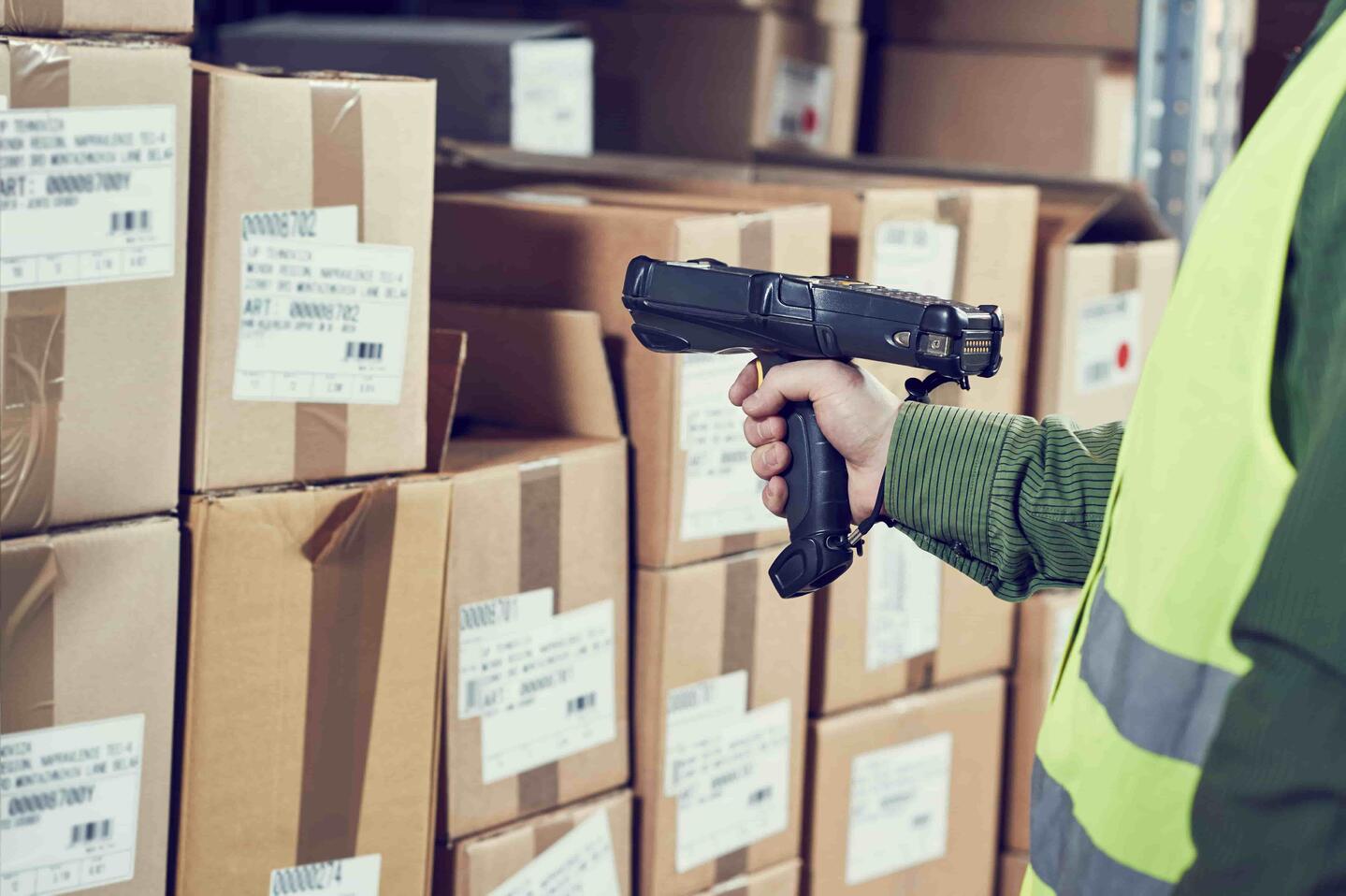I’ve been wanting to write this blog for some time now. Spending a good half of my career in operations, inventory control is close to my heart and I feel it’s often overlooked, under-valued and assumed as a given in today’s typical ERP implementation and subsequent stewardship.
Yet, in the world of food where our inventory ‘is’ our business, it’s even more important to not lose focus in this area.
This article is specifically focused on the ‘nuts and bolts’ of inventory control. So, the control of products that you already have in your warehouse, as opposed to inventory management (you can read more on that here), the forecasting and replenishment of inventory.
Below, I’ll share some of my learnings to date on the principles, pitfalls and mantras of great inventory control and how to truly leverage your ERP system in this respect.

Inventory in its heyday
In the ‘50s and ‘60s, the lean manufacturing movement was on the rise. That was followed by the development of affordable laser scanning in the ‘70s and ‘80s, plus mass adoption of lean manufacturing in the latter decade. That meant by the ‘90s, everyone was implementing ‘modern’ inventory management and control systems and respective software.
It was the next ‘big thing’.
The benefits included:
- High efficiency processing
- The need for less warehouse space
- Less cash tied up in inventory
- Improved availability
- Better lead times
- Less waste
In short, it meant that wherever you looked, inventory control systems were making sure that products were there when you needed them. I even have an Oliver Wight volume on the subject on my bookshelf!
20 odd years later and all the above benefits are still absolutely valid.
More so, the above has become commonplace and an expectation for customers and suppliers alike. But things have moved on. The current list of exciting benefits that come with an ERP implementation is now expressed more along the lines of:
- Full visibility of information
- Better analysis and reporting
- Integration and automation
- Improved collaboration
- Increased productivity
- Delighting the customer
 Photo by Remy Gieling on Unsplash
Photo by Remy Gieling on Unsplash
Of course, I’m not saying that there’s anything wrong with the above. Far from it! But what I am saying that there is a fundamental backbone for food businesses and ERP systems alike that underpins most, if not all the benefits above.
My time in the food industry has shown that inventory control can be far from good and sometimes quite poor. Poor inventory control means poor information, poor customer service and poor financials.
This is the reason that every time I engage with a client on a food ERP project, my first recourse is always to assess their inventory control. How truthful is their information vs the reality?
The truth: Genchi Genbutsu!
Truth. That’s an odd word to use in an ERP blog, isn’t it? But I like it. Here’s why…
The goal of great inventory control is to know exactly what inventory you have, exactly where it is and most importantly in the food industry, as a deviation from traditional manufacturing, what condition it is in.
Ultimately, it's to access this information instantly at the click of a button.
The ‘How-tos’ are coming next but here, I’d like to make a point about the ‘truth’ and how it underpins ERP processes in general. Solutions like Aptean Food and Beverage ERP integrated with Microsoft Dynamics 365 Business Central, are designed with inventory at their core and for each transaction to be captured once, as it happens.
What this means in practice is that success can be defined as every virtual inventory item and lot held in the ERP system matching exactly every physical item and lot in the warehouse and on the shop floor.
I’ve lost count of the amount of times that I have heard things like:
- “…the system doesn’t match my spreadsheet, it’s wrong!”
- “…we can’t have used that much stock”
- “…We should have 300 left from yesterday, it must be there”
- “…the stock valuation looks way too high; we need to count it again!”
.jpg?width=5472&name=man-holding-clipboard-inside-room-1543924%20(3).jpg) Photo by Craig Adderley from Pexels
Photo by Craig Adderley from Pexels
Two points to make here:
- There is only ever one answer to any inventory question, and it is the pallet that physically sits in the warehouse. To deal with any inventory queries always start by going to see what is physically there with your own eyes
- For any issues that you’re having reconciling your ERP systems inventory to what’s out in the warehouse, make sure that you change the defective processes that are causing the issues. Changing the data in the ERP system is just a sticking plaster that will come off again next time around.
And, therein lies the truth!
Oh, and for those of you that didn’t Google it. ‘Get your boots on’ or ‘Go see for yourself’ is a good translation of Genchi Genbustsu!
What are the big 5 control points and how can we tackle them?
To really focus on world-class inventory control, we need to focus on making sure our ERP system lines up perfectly with every physical stock change we make. That’s a lot of people, a lot of process and a lot of transactions.
How do we do that?
Let’s break it down… If we think about inventory quantity changes, we can reduce them down to five points. To increase inventory, we can only buy it or make it. To reduce inventory, we can only use it, sell it or it ends up in the bin!
Where Aptean Food and Beverage ERP comes in…
Aptean Food and Beverage ERP is designed to mirror each of the points by receipting, outputting, shipping, consuming and writing off respectively.
If each individual accurately records each of the five transactions every time they happen as they happen, before we know it, we’ll have a fully functioning live inventory position mirrored in our ERP system.
This is simplicity in the complexity.
Here’s how Aptean Food and Beverage ERP looks after each control point, plus some common mistakes that I often come across.

Receipts
Aptean Food and Beverage ERP allows the user to record every receipt onto site as it arrives.
Benefit – All colleagues in the business have a live picture of the product as it arrives. No more phoning the intake department to see if a load has arrived yet.
Mistake – One of the common mistakes I’ve seen here is businesses allowing product onto site even though there’s a purchase order missing or certain important information absent. This undermines discipline and information integrity right from the very start of the process.
This can be avoided by making sure everyone in the business is bought in to getting it right the first time. If the incoming load doesn't have the required information for the process to be completed, it waits until it does.
Consumption
Aptean Food and Beverage ERP allows the user to record live product into the production environment and to confirm its usage.
Benefit – All products are allocated to production and depleted on a live basis therefore eliminating the possibility of double booking of product and corresponding shortages.
Mistake – A common mistake here is assuming that the expected consumption rate on the Bill of Material is what is physically used. This means that variances in actual consumption aren’t picked up and result in poor back to stock inventory accuracy affecting downstream data.
Avoid this by making sure that the production process includes the step of confirming what has actually been consumed in contrast to a pre-defined standard quantity. This is imperative in maintaining perfect inventory control.
Output
Aptean Food and Beverage ERP allows the user to record live outputs from the production environment.
Benefit – A live view of progress against plan and early warning of any potential shortfalls throughout the day.
Mistake – The most common mistake here is production teams getting ahead of themselves. Perhaps by outputting in advance to produce labels. This gives a false view of inventory position and production efficiencies.
Similar to the above, this can be avoided by making sure that everybody is bought into the 'get it right first time' culture. Each output is recorded and labelled as it happens. Not before. Not after.
Shipments

Aptean Food and Beverage ERP allows the user to record live the picking and shipping of finished goods to customers.
Benefit – A live view of customer service and OTIF as each vehicle leaves the site and an early warning of any potential customer shorts.
Mistake – Trying to keep legacy processes like prescriptive paper picking lists in operation. This goes against the flow and agility of an ERP system and can cause inefficiencies.
Avoid this by committing to dropping older paper-based processes and engaging in the new processes. This can be a painful process. A business that embraces and works with its systems will succeed in the long run.
Write-off
Aptean Food and Beverage ERP allows the user to record all products that have been disposed of with corresponding reason codes.
Benefit – Allied to the above, perfect inventory accuracy.
Mistake – Focusing on the top four control points and forgetting about this one. QC sampling can be a typical process that is easily overlooked and lead to inventory inaccuracies.
This can be avoided by carefully mapping out business processes in the early stages of an ERP implementation to make sure that every occurrence of the above control points has been captured. Then the system can be matched to each of these to make sure that none are missed.
And that’s it. Nail these five control points and the inventory will look after itself.
And remember, when you find errors, fix the process, not the data!
Earlier, I mentioned that the ultimate endpoint of great inventory control is to know exactly what inventory you have, exactly where it is and what condition it is in.
Now that we can manage the “what we have”, let’s head to the “where it is” and “what condition” it’s in.
Warehouse management
Aptean Food and Beverage ERP boasts complete location and warehouse management driven by the D365 Business Central platform allowing for virtual replication of your whole site and warehouse layout, stores and bins.
In addition, Aptean Food and Beverage ERP adds container management functionality. This allows for inventory to be ‘loaded’ onto or into pallets, dolavs, tonne boxes and so on. These can then be moved around the warehouses and production environment via mobile devices.

Quality
Aptean Food and Beverage ERP’s quality control allows for the capture and reporting on the condition of a particular lot and any associated defects supporting the best possible decision making.
Real-time inventory – The human brain vs the computer brain
So, we discussed what’s needed to reach world-class live inventory control. But what does this mean to the users who may have spent their whole careers using point in time inventory information?
Every food business either has or has had that spreadsheet. You know the one - It lists each product line, an opening stock position for today, expected receipts or production, expected sales or shipments and a calculated closing position.
The closing position, in turn, being the opening position for tomorrow and so on.
This sheet may be updated throughout the day with actual positions as they’re known. But this sheet won’t be needed when we implement an ERP system, right?
A word of caution…my experiences suggest that this information isn’t just a spreadsheet, it’s an ingrained way of viewing the business. And rightly so.
The human brain wants a simple overview of inventory position and focal points, but a spreadsheet can be out of date, inaccurate and admin heavy. The ERP brain has up to the minute information on every single transaction for every process, but it’s not necessarily easy to see on one page what all this means at a high level.
This is where tools like Power BI working in unison with Aptean Food and Beverage ERP comes in. You can access the accurate, real-time inventory information held in the ERP system in a familiar format presented by a powerful analytics program.
Now you can really look to lose all those legacy spreadsheets.
3 signs of perfect inventory control
So how do I know when all of this is working as it should? Here are some indicators…

1. No stock takes
Yes, no stocktakes. None! Well, not in the traditional sense.
Once all five control points become more disciplined and the business trusts their hour-to-hour, day-to-day inventory information, traditional ‘shut-down’ stock takes driven by the financial team can be replaced by cyclical stocktakes driven by operational needs.
2. No safety stocks
Buffer stocks are a legitimate part of process levelling, maintaining flow through the business. Safety stock, on the other hand, is there to mitigate against mistakes and errors.
As the businesses virtual and physical stocks become more aligned, safety stock levels naturally reduce freeing up cash and reducing the risk of spoilage.
3. Inventory valuation
System inventory valuation is believed. One of my favourite points on any ERP journey is when the finance team are satisfied that the inventory valuation held in the system is accurate and can be stated in the accounts, without the need for manipulation or further ‘shut down’ counting.
Stock control isn't the only benefit of an industry-specific solution...
As you can see, Aptean Food and Beverage ERP can do wonders for your stock/inventory control. But this isn't the only challenge the industry is experiencing, nor is it the only one our solution can help with.
From batch control and lot tracing to waste management and supply chain optimisation, click the button below to read more about the specific features of Aptean Food and Beverage ERP.

